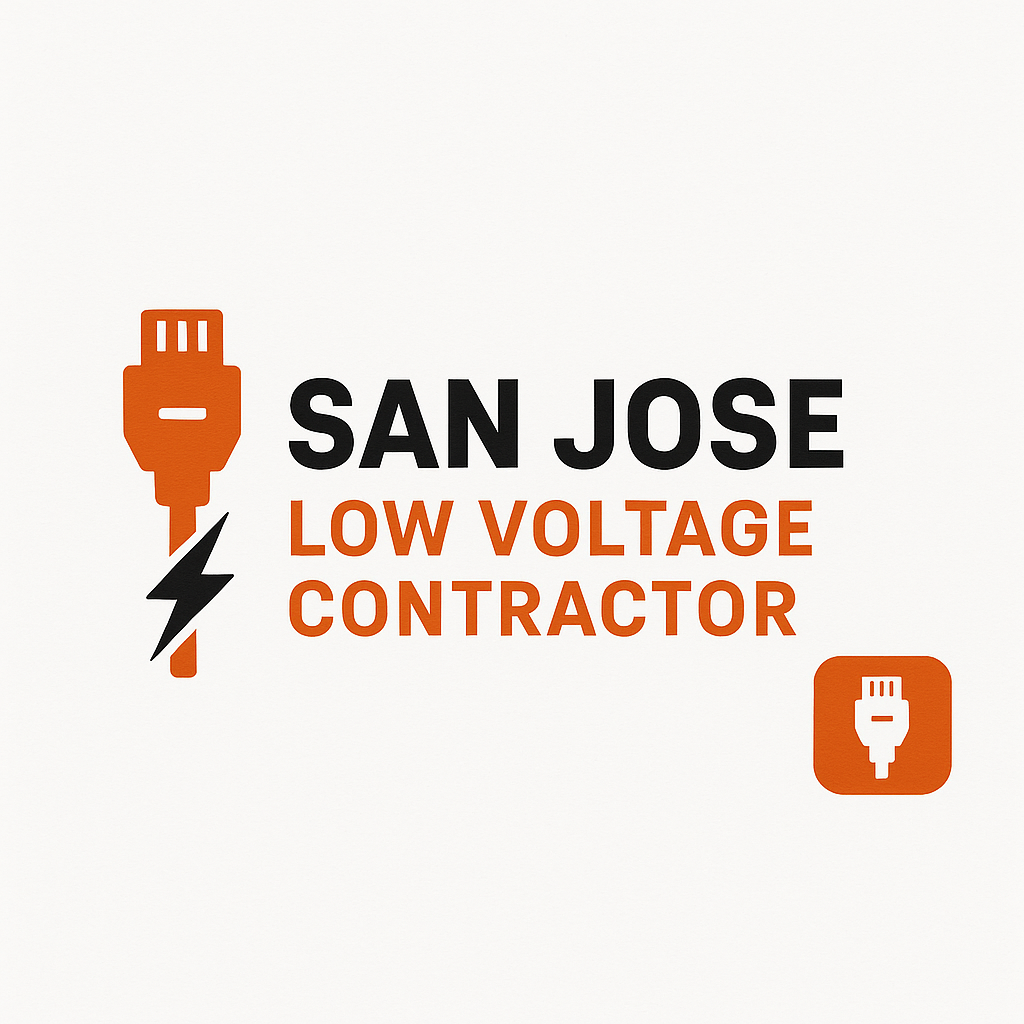Low Voltage Wiring Code in San Jose, CA | What You Need to Know
In San Jose, California, property owners, contractors, and building managers must follow specific electrical standards when installing or modifying low-voltage systems. Many assume that because these systems operate at lower voltages, they are exempt from strict regulations. However, the City of San Jose and the State of California both have clear rules and inspection requirements for low-voltage wiring. Understanding these codes is essential for maintaining safety, efficiency, and compliance during any installation or upgrade.
What Is Low Voltage Wiring?
Low-voltage wiring refers to electrical circuits that operate at lower voltages than standard electrical systems. Typically, these circuits run at 50 volts or less and are used for applications such as:
- Security cameras and alarm systems
- Network and communication cabling
- Audio-visual systems
- Intercoms and access controls
- Lighting controls and sensors
- Building automation systems
Although these systems use less power, they still carry potential fire and safety risks if installed incorrectly. For this reason, San Jose’s building and electrical codes apply to all low-voltage installations, especially in commercial and multi-unit residential properties.
Overview of Low Voltage Wiring Codes in California and San Jose
California’s statewide building and electrical codes establish the foundation for all local regulations. San Jose adopts these standards and may include city-specific amendments to address local conditions and enforcement procedures.
Key governing documents include:
- California Electrical Code (CEC) – Based on the National Electrical Code, this outlines the minimum safety requirements for wiring, installation, and grounding.
- California Building Standards Code (Title 24) – Establishes construction and energy standards that affect low-voltage systems, particularly those related to lighting controls and energy management.
- California Code of Regulations Title 8 – Covers workplace and installation safety requirements for low-voltage systems.
- San Jose Municipal Code – Enforces local permitting, inspection, and amendment procedures for all electrical work performed within city limits.
Together, these codes ensure that low-voltage installations meet both state and local safety and performance standards.
Permit and Inspection Requirements in San Jose
In San Jose, not all low-voltage projects are exempt from permitting. The city requires permits for most new installations and major modifications to ensure compliance with the adopted electrical code.
Permits are commonly required for:
- Fire alarm and security systems
- Structured cabling for offices and commercial spaces
- Access control and surveillance systems
- Audio-visual and data network installations
Once a permit is issued, inspections are conducted at various stages of the project. These inspections verify that wiring methods, materials, and clearances comply with local and state code requirements. Skipping inspections or performing unpermitted work can result in fines, delays, or the need to redo completed work.
Key Code Requirements for Low Voltage Wiring
1. Circuit Classification
Low-voltage circuits are classified by type and power limitation, such as Class 1, 2, or 3 circuits. Each class defines voltage and current limits, insulation requirements, and protection methods. Installers must verify circuit type to ensure proper compliance.
2. Separation from High-Voltage Wiring
Low-voltage and high-voltage conductors must be separated or properly shielded to prevent interference and electrical hazards. The minimum separation distance depends on the type of cable and whether it is shielded or unshielded.
3. Cable Type and Ratings
Cables must be rated for their intended use. For example, plenum-rated cables are required for air-handling spaces, while riser-rated cables are used for vertical runs between floors. Outdoor or underground wiring must use moisture-resistant or direct-burial-rated cables.
4. Grounding and Bonding
Even though low-voltage systems carry less power, grounding and bonding are still required for safety and performance. Proper grounding prevents static buildup, surge damage, and communication signal interference.
5. Conduit and Routing
Cables should be routed through approved pathways such as conduits, trays, or raceways where necessary. Bends must follow minimum radius requirements to prevent cable damage. Low-voltage wiring cannot be run through air ducts or unapproved spaces unless specifically rated for those environments.
6. Labeling and Documentation
All low-voltage wiring should be clearly labeled at both ends to identify its purpose and destination. Documentation such as wiring diagrams and as-built drawings are often required for final inspection and long-term maintenance.
Common Mistakes to Avoid
- Mixing high- and low-voltage wiring in the same conduit without proper separation
- Using non-rated cable types in plenum or riser spaces
- Installing ungrounded or improperly bonded systems
- Performing work without permits or inspections
- Failing to follow manufacturer installation guidelines
Avoiding these errors helps ensure compliance with both local and state regulations while minimizing costly rework or inspection failures.
Benefits of Following San Jose’s Wiring Code
Adhering to local wiring codes provides several important benefits:
- Safety – Reduces the risk of electrical shock, short circuits, or fires.
- Reliability – Prevents interference and signal degradation in communication or control systems.
- Code Compliance – Ensures successful inspections and legal approval for occupancy or system operation.
- Insurance Protection – Maintains eligibility for property and liability insurance coverage.
- Long-Term Performance – Improves system durability and future upgrade compatibility.
Conclusion
Low-voltage wiring in San Jose is governed by a combination of state and local regulations that ensure safety, reliability, and proper system performance. Whether installing communication networks, security systems, or automated controls, compliance with these codes is crucial. Understanding voltage classifications, cable types, separation rules, and inspection requirements helps prevent costly mistakes and promotes safer, more efficient installations. For any low-voltage project in San Jose, proper planning, professional execution, and adherence to local wiring codes are the keys to success.
